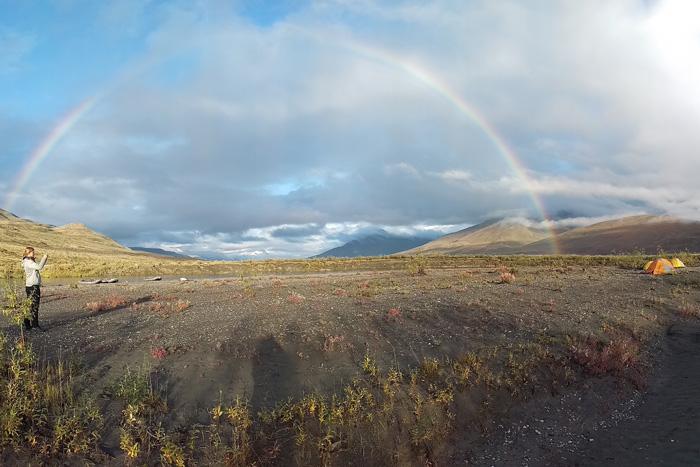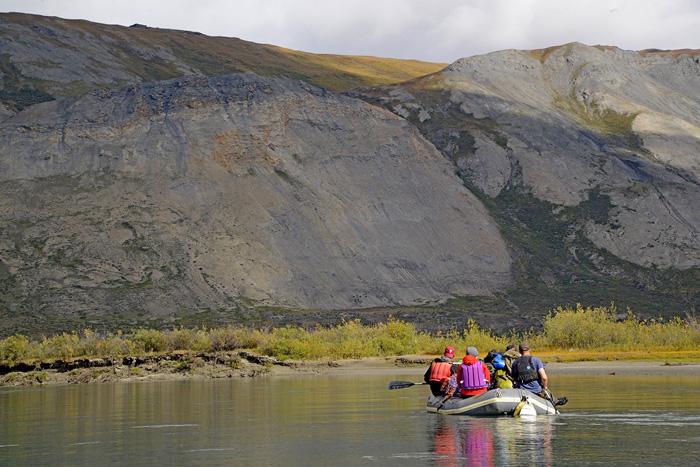Gates of the Arctic, Up Close and Personal

Photo courtesy of James Fisher ’18.
Students spend a week above the Arctic Circle to experience climate change’s impact
by Tony Moore
There’s nothing like stepping outside the pages of a textbook to learn about the world firsthand. And if you’re studying subjects such as surface processes, structural geology and global warming, heading north to spend some time in the nightless environs of the Alaskan wilderness is about as good as it gets.
“Camping above the Arctic Circle, over 100 miles from the nearest civilization, is an experience I will never forget,” says James Fisher ’18 (earth sciences), whose experience with the never-setting sun and the echoless quiet of the Gates of the Arctic might resemble a trip to another planet. “The complete silence, to be alone with your thoughts and really appreciate this amazing area, it made me realize how precious it is and how we all ought to work to protect this beautiful portion of our country."

Photo courtesy of Ben Edwards.
Fisher and three other Dickinson students accompanied Associate Professor of Earth Sciences Ben Edwards and Assistant Professor of Earth Sciences Alyson Thibodeau on the 3,330-mile journey, along with John ’78 and Susan Pohl ’80, who have now sponsored three trips to the Arctic with Dickinson students—first to Baffin Island (with Marcus Key, Joseph Priestley Professor of Natural Philosophy), then to Greenland (with Edwards) and this most recent one to Alaska.
Edwards says the trip was the perfect opportunity to expose students to the Arctic, a place continually in the news and near the heart of the climate change debate. “We wanted to show students how climate change is affecting parts of the Arctic and give them a taste of the skills that are required to do fieldwork in remote areas,” he says, noting that students practiced field observation as well as camping and rafting, apt skills for any earth sciences toolkit.
“We rafted down a U-shaped valley that we learned had been formed by a glacier flowing through the mountain range,” Fisher says. “We could also see evidence of the mountains being worn down by erosion, in a feature called an alluvial fan.”
Megan Layman ’16 says everything she’s been studying in her classes was suddenly right there before her, providing “multiple opportunities for learning.”
“I’ve always known that I liked being outside in nature and exploring, but the trip to Alaska brought this realization to a whole new level,” says the earth sciences major, who notes that she saw the very geological features she’d learned about in her Structural Geology course. “And I’m currently in a Surface Processes class, and concepts are much clearer to me now because of my seven-day rafting trip in Alaska. It’s a totally different experience to see geological structures and processes face-to-face instead of just on a PowerPoint slide.”
The vegetation, abundance of Arctic animals encountered—including bears, salmon, musk ox, Dall sheep and loons—and vast landscapes prompt Layman to call the region “an entirely different world,” and it’s one she’d revisit in a heartbeat.
“This trip helped me realize that not only do I want to pursue a career in the earth sciences, but I want the opportunity to travel as much as I can and see as much of the world as possible,” she says. “Alaska was a trip of a lifetime, and the beauty of it has spiked my passion for geology and for traveling more than ever before.”
Learn more
Published December 7, 2015